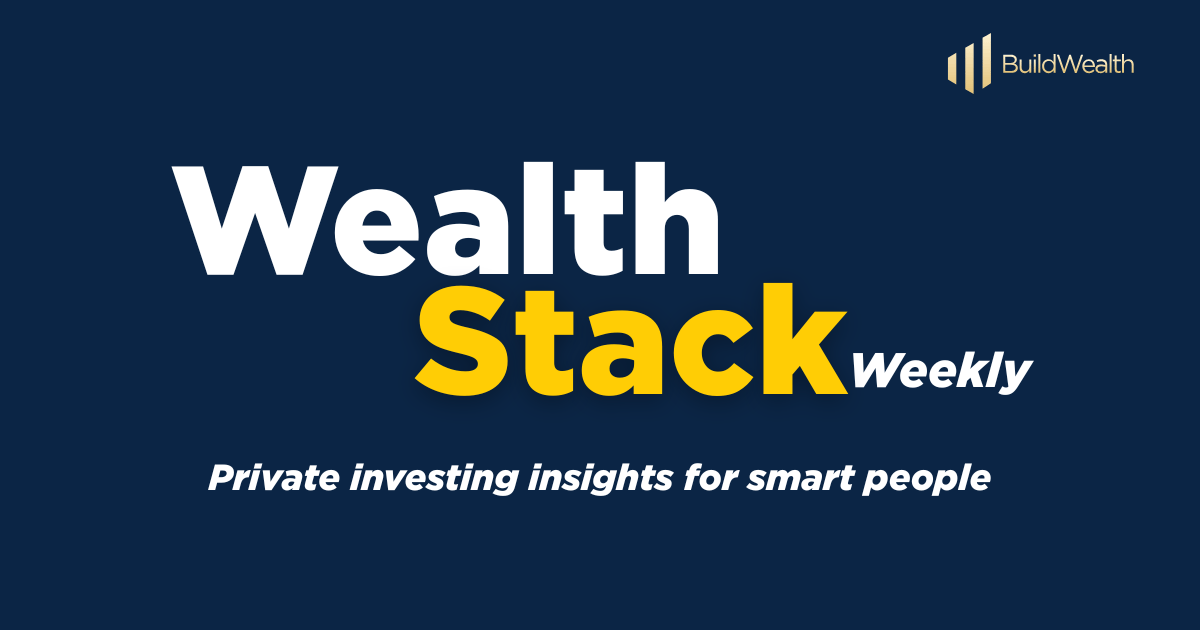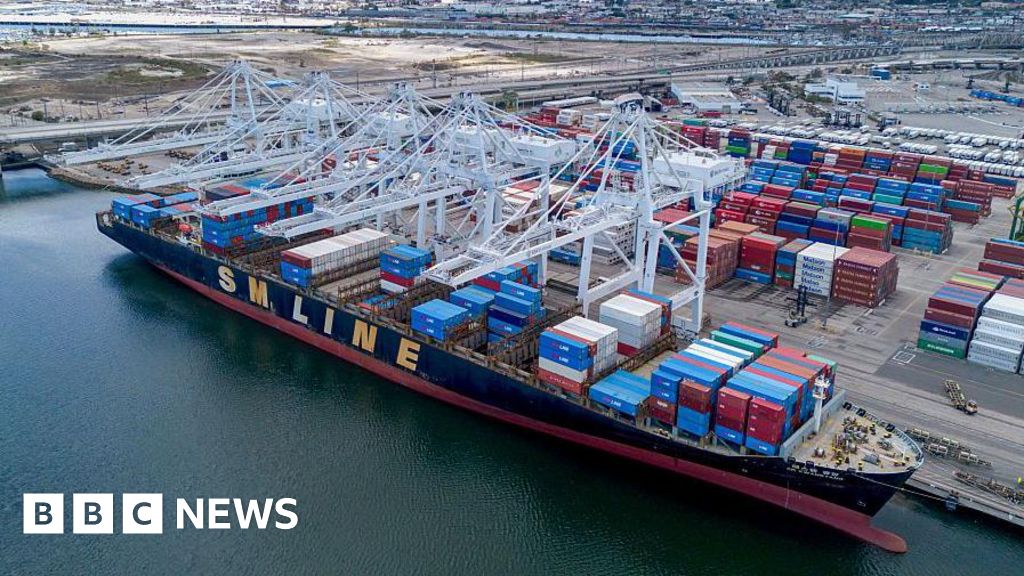- Wealth Stack Weekly
- Posts
- Your Map To The Private Markets Starts Here
Your Map To The Private Markets Starts Here
If you had quietly bought into St. Louis’ Central West End in 2013—before the cranes, before City Foundry, before Cortex became a national case study—you wouldn’t have needed to be the biggest check in the room.

The Best Time to Invest in Real Estate Was 2013. The Next Best Time Is Now.
Hi ,
If you had quietly bought into St. Louis’ Central West End in 2013—before the cranes, before City Foundry, before Cortex became a national case study—you wouldn’t have needed to be the biggest check in the room. You just had to time it right.
Since then, billions in institutional capital have flooded in. Medical campuses expanded. Innovation districts took shape. Luxury towers pierced the skyline. And the investors who positioned themselves ahead of the curve didn’t just earn solid returns—they caught a city-wide revaluation.
Today, the conditions are strikingly familiar: capital is tight, prices are dislocated from fundamentals, and revitalizing urban corridors are quietly preparing the launchpad for the next decade of outperformance.
But let’s be clear—revitalization isn’t just a real estate story. It’s a code. A pattern. A set of stacked investment levers hiding in plain sight: discounted entry, tax credits, public-private partnerships, operator arbitrage, and pent-up demand. When layered together, they don’t just create value—they compound it.
This newsletter exists because we’re on the front edge of a much bigger wave.
Over the next 10 years, we’ll see the largest reallocation of capital in a generation—from public markets to private ones. Sophisticated investors—especially those who’ve built wealth inside publicly traded companies—are waking up to a hard truth: the stock market isn’t designed to make them rich. It’s designed to keep them invested.
The real growth is happening where access used to be restricted. Private credit. Direct real estate. Growth equity. Niche alternatives. This isn’t some trend. It’s a macro migration. And if you’re not already moving, you’re already behind.
This newsletter is your map. Weekly insights, frameworks, and real-world deal flow from someone who’s not just observing the private markets—I’m actively operating inside them.
For Wealth Stack Weekly I’ve assembled a team of private market researchers to help us develop extraordinary insights backed by trends and empirical evidence, so we can make more sound, calculated investments.
We’ll show you where the capital is headed next, who’s getting there first, and how to ride the wave—before it breaks.
Welcome to the edge of the private markets.
— Walker Deibel
WSJ Bestselling Author & Founder, Build Wealth
DATA DIVE
Revitalization is the strategy. Everything else is just tactics.
At Build Wealth, we’re not in the business of chasing markets. We’re in the business of creating them. That’s what revitalization is about.
Revitalization (or sometimes called gentrification) isn’t some passive tailwind you hope to catch. It’s a strategy, one that turns forgotten neighborhoods into wealth-building machines through intentional capital deployment, infrastructure investment, and cultural momentum. And it’s the single most overlooked lever for generating yield and appreciation in today’s real estate environment.
We’ve seen it firsthand. When you combine public spending with private execution, before the comps, before the headlines, you don’t just watch value rise, you manufacture it. We’re talking rent growth, compressed cap rates, and higher exit multiples stacked on top of each other.
But here’s the nuance: you can’t do revitalization from a spreadsheet. You need street-level knowledge, operator-grade instincts, and a long-term mindset. That’s how you spot the right block, structure the right deal, and build for the people who are actually going to live, work, and thrive there.
In a world where capital is tight and the old playbooks don’t work, revitalization is how you stay ahead. Not just financially, but strategically. We’re not just buying buildings. We’re building neighborhoods. And that’s where the alpha lives. (Read or Listen to the Full Report)
BEHIND THE NUMBERS
Why 2013 May Be the Playbook for 2025 (and What That Means for Your Capital)
If you're wondering where to park capital in a post-ZIRP world, the answer might lie in the past.
In 2013, the U.S. multifamily market wasn’t chasing hype—it was rebuilding on hard fundamentals. Permits rose 70% from their 2010 low, yet vacancy rates were falling, not rising. Cap rates compressed from 7.5% to 6.2%, signaling real investor confidence, not just loose money.
Now, in 2025, we’re watching a mirror image form—but with stronger tailwinds. Interest rates are still elevated, speculative liquidity has dried up, and only the sharpest pencils are in the game.
Just like 2013, the winners today aren’t playing “growth at all costs.” They’re building yield with block-by-block intel, conservative leverage, and disciplined value-add strategy. St. Louis, Indy, and a dozen other overlooked metros are quietly loading the slingshot. You just need to be on the right side of the trajectory.
Here’s the kicker:
Cap rate decompression isn’t a bug—it’s your margin of safety. If you know how to operate, today’s market is a gift.
Takeaway: Forget 2021. If you’re underwriting like it’s 2019, you’re already behind. Think like it’s 2013 again—because the biggest returns will go to those who know how to buy well and operate better. (Read Or Listen To The Full Article)
CASE STUDY
How Build Wealth Investors are revitalizing City Commons in St. Louis
At Build Wealth, we don’t just write about asymmetric upside. We create it.
My real estate team here in St. Louis focuses on multiple projects in cherry-picked neighborhoods primed for revitalization. After a new $650+ million soccer stadium unlocked a former urban dead-end, AHM acquired 12 consecutive acres “next door,” undergoing a series of value-add and ground up development.
As a result, AHM will own 1,045 apartments and 160,000 square footage of commercial space in the City Commons neighborhood when the portfolio is completed. (They already own so much real estate they can veto liquor licenses.)
As a result, Build Wealth was able to partner with AHM and offer investment opportunities to everyday accredited investors to capitalize on this exciting project in both the “Rothschild Portfolio” and “The 314.”
The Rothschild Portfolio entailed the acquisition of 3 value add-buildings and a parking lot. We’re currently 15 months in and currently tracking an (unrealized) 49% internal rate of return for the investors as the team improves the buildings while turning over the tenants from government protected rents, to market.
The 314 built on this foundation with a bold, crown-jewel development. The 314 is a 29-story mass timber skyscraper, scheduled to be the tallest in the world. Designed from the ground up to activate an entire city block, this project isn’t just a real estate deal. It’s a blueprint for what urban development can look like when sustainability, affordability, and market fundamentals intersect.
Overall, AHM has the ability to strategically city build: a corner store here, a cafe there, St. Louis 2nd largest brewery here in the middle… etc. 12 acres, five phases, hundreds of units, and tens of thousands of square feet of commercial space, anchored by everything from St. Louis University to the NGA to CityPark Stadium.
It’s like playing 3D chess where you no longer need a great deal–you make one by leveraging your edge–your inside knowledge–and your momentum.
This is what it looks like when you take the Wealth Stack mindset from strategy to street level.
If you missed out on these, don’t worry–lots more to come. AHM still has 2 last buildings in City Commons, and a new portfolio in their next neighborhood in the works. (More)
HIDDEN GEM
Ignore the headlines about AI startups and crypto rebounds for a second, the real alpha may be sitting on a factory floor.
While Wall Street was chasing the next shiny SaaS IPO, something quietly powerful has been happening in U.S. manufacturing. Since late 2022, manufacturing labor productivity has been on a consistent upswing—finally clawing its way back to pre-2018 highs. This isn’t just a rebound. It’s a structural shift—driven not by layoffs or cost-cutting, but by real operational efficiency.
Looking for an opportunity to invest in the US manufacturing trend? Check out our Build Stone II Fund (commitments due by May 15th)
And buried in the data lies a private market opportunity most investors are missing.
McKinsey’s recent report confirms that sectors like Computers (+8%), Semiconductors (+5%), and Electronic Equipment (+5%) are leading the charge. These aren’t dusty old smokestacks—we’re talking about a high-tech industrial renaissance. But the smart money? It’s not chasing the OEMs. It’s looking one layer deeper.
Logistics automation. Precision tooling. Industrial software.
These are the niche enablers powering the productivity gains behind the scenes—often undercapitalized and still operating in inefficient, fragmented ecosystems. They’re flying under the radar of public markets but riding the same tailwinds. Think of them as the picks and shovels of the modern manufacturing gold rush.
And unlike the public markets, private valuations here haven’t caught up yet. That’s your edge.
Whether you’re syndicating your first deal or deploying capital via private equity, this is the moment to lean into the reshoring + digitization tailwind. It’s not just about what America is building again—it’s how we’re building it. And that shift in the "how" is creating some of the best asymmetric bets in the private markets right now.
Gem takeaway: The smart move isn’t to chase the manufacturers themselves—it’s to own the backbone infrastructure that’s quietly fueling the boom. These businesses may not make headlines, but they do make margin.
WEALTH STACK SPOTLIGHT
BGI’s Seaport Revitalization Bet
Most investors play within the boundaries. A few redraw them.
In 2006, John B. Hynes III and Boston Global Investors (BGI) did the unthinkable: they partnered with Morgan Stanley to buy 23 acres of forgotten waterfront real estate, mostly asphalt and warehouses, for $205 million. At the time, Boston’s Seaport was the city’s neglected backyard. Now? It’s one of the most dynamic urban neighborhoods on the East Coast.
That 23-acre bet became Seaport Square, a 6.3 million square foot master-planned development that transformed a dead zone into a live-work-play magnet for tech, life sciences, and finance. But this wasn’t just another glass-and-steel high-rise play. BGI brought a different lens to the table: long-term value creation over short-term gains.
Instead of optimizing for max buildout or short-term returns, Hynes and team focused on building a neighborhood. Mixed-use, walkable, and rooted in public space. Their thesis? That the future of urban development isn’t just density, it’s vibrancy. That meant innovation hubs, green space, retail, cultural anchors, and waterfront access—all stitched together with design, not just zoning.
They got buy-in from the city, worked hand-in-hand with local stakeholders, and leaned into climate resilience and transit access years before ESG was trendy. That’s what separates developers from visionaries.
Fast forward to today: the assessed value of Seaport Square alone has jumped from under $40 million to over $2.5 billion. The Seaport District is now Boston’s corporate epicenter and a magnet for capital.
But the real ROI? BGI proved that private capital can lead urban revitalization, and do it in a way that’s not just profitable, but transformative.
AUDIENCE POLL
We’d love to hear how you're navigating the current rate environment. With higher-for-longer looking more likely, how are you thinking about private fund allocations right now?
How are you adjusting your private fund allocations given current interest rates? |
WEALTH STACK TOOLBOX
The Wealth Stack Personal Snapshot
If you're making strong income but feeling like you’re still running uphill, it’s probably not your spending—it’s your visibility. Most people don’t have a system for tracking where their money is actually going or how their net worth is trending month to month.
That’s where the Wealth Stack Personal Snapshot comes in.
This tool isn’t some dusty budget spreadsheet you used once and forgot about. It’s a living dashboard built for investors who want to track personal income, expenses, savings rate, and net worth—with the same level of clarity you'd expect when evaluating a business.
Here’s what it includes:
Income vs. Expense Tracking: See what’s coming in, what’s going out, and where you can optimize.
Wealth Accumulation Overview: Year-over-year net worth growth visualized so you stay focused on the long game.
Cash Flow & Burn Rate Calculations: Know how long your reserves will last—and how fast you’re stacking.
Editable Categories: Adaptable for W-2, business owners, or real estate investors.
Whether you’re prepping for your first acquisition or already stacking slices of private deals, this tool helps you make decisions like a CFO—not just a consumer. (Download Tool)
WHAT WE ARE READING
"In the business world, the rearview mirror is always clearer than the windshield"
Warren Buffet





